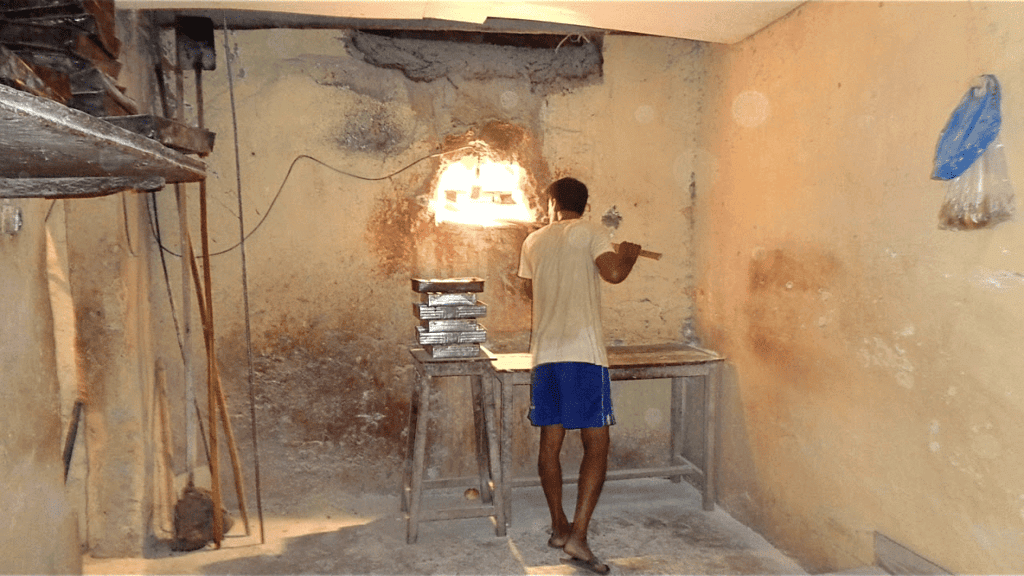Glimpses of India (Part- I) A Baker From Goa Summary Class 10 English First Flight Chapter 7
| Table of contents |

|
| Key Points of the Story |

|
| Detailed Summary |

|
| Theme/Message |

|
| Glossary |

|
Key Points of the Story
- A village baker in Goa is an important figure in the community.
- Bakers have been around for generations, continuing their old ways of making bread.
- People fondly remember the baker visiting their homes daily, creating happy memories.
- Bread holds a special place in Goan culture, being a part of celebrations like weddings and festivals.
- The baker's clothes, the way they collected payments, and their comfortable lifestyle show how respected and successful they were.
Detailed Summary
In this captivating chapter, the author transports us to his cherished childhood memories in Goa, where the village baker occupied a cherished place in the hearts of all. Despite the evolving times and a decline in bread consumption, the time-honored tradition of village bakers remains alive in Goa. Though the Portuguese, renowned for their artistry in bread-making, departed long ago, the echoes of their legacy resonate in the skilled bakers of Goa today, affectionately known as 'Pader.'

The author warmly reminisces about the baker who graced his village twice a day, playing a multifaceted role not only as a purveyor of bread but also as a trusted friend and mentor. The baker's presence was announced by the rhythmic thud of his bamboo stick, creating a unique melody of 'jhang, jhang' as it struck the ground. Skillfully balancing a basket of bread on his head, he would make his rounds, catering to the households' culinary needs. While other residents purchased loaves of bread, the author eagerly sought out the baker to acquire delectable bread bangles.
What role did the village baker play in the author’s childhood memories in "The Baker of Goa"?
During those days, bread was not just sustenance; it held a certain fashionable allure, especially when paired with a steaming cup of tea. The author's adoration for bread was so profound that he would gleefully forgo brushing his teeth in favor of indulging in its flavorsome delights. The village baker played an indispensable role in various celebrations, particularly for the exquisite sweet bread called 'Bol.' This delectable treat was an indispensable element in marriage gifts and festive occasions like Christmas. The baker's traditional furnace was a vital asset in every village, as it facilitated the creation of an assortment of cakes and confections that could only be masterfully baked within its fiery confines.
 Traditional Goan Bakery
Traditional Goan Bakery
The attire of the baker, or bread-seller, was equally distinctive, known as the 'kabai' – a knee-length, one-piece frock. In the author's childhood, bakers donned trousers that fell between full-length and half-pants, occupying a unique sartorial niche. To this day, wearing half-pants evokes comparisons to being dressed "like pader."
Traditionally, the baker would collect his dues at the end of each month, with accounts meticulously recorded in pencil on household walls. Baking proved to be a lucrative profession, as evidenced by the bakers' well-nourished physiques, signifying prosperity and abundance. While the tradition of village bakers may have waned over time, their indelible memories persist, and their profound contributions to society should never be forgotten.
Theme/Message
- Cultural Heritage and Tradition: The story highlights the cultural significance of the traditional baker in Goan society, emphasizing the preservation of heritage.
- Community Interactions: It portrays how the baker was not just a bread-seller but a familiar figure who played a social role, fostering connections within the community.
- Importance of Small Businesses: The narrative underscores the importance of small-scale businesses like the village bakery in sustaining community life.
Glossary
- Loaves: Bread in the form of a thick slice.
- Bamboo staff: A long stick made of bamboo.
- Furnaces: Enclosed structures where heat is produced.
- Bangles: Bracelets, especially those worn in sets on the wrist.
- Engagement: A formal agreement to get married.
- Festivals: Celebrations or occasions of a particular type.
- Peculiar: Unusual or distinctive in nature.
- Physique: The form or structure of a person's body.
- Plump: Having a full and rounded shape.
- Prosperous: Successful or flourishing, especially financially.
|
61 videos|616 docs|69 tests
|
FAQs on Glimpses of India (Part- I) A Baker From Goa Summary Class 10 English First Flight Chapter 7
| 1. What is the significance of the baker in the story "A Baker From Goa"? |  |
| 2. How does the author describe the life of a baker in Goa? |  |
| 3. What themes are explored in "A Baker From Goa"? |  |
| 4. What difficulties does the baker face in the modern world? |  |
| 5. How does the author evoke nostalgia in the story? |  |
















